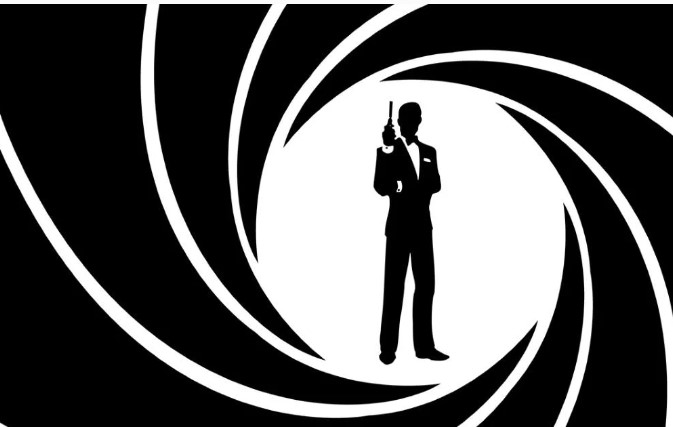You believe something is right, you must have substance and facts behind it, to support it. James Bond creator Ian Fleming is credited with the phrase; “Once Is Chance, Twice is Coincidence, Third Time’s A Pattern”. For those of you who missed HISTORY OF BELIEF PART ONE, click HERE. You made need the background.
CASE STUDY 2
In 1992, having come back from Dublin, I got married and moved to Fiddown, I became a Piltown player, (The parish of my wife and my mother). I did not break into the Piltown main team other than for challenges and tournament games over the couple of years I wore the amber jersey. Disappointing but life is not a fairy-tale or the fiction I write as a writer (that has happy endings!). However, those games I did play, my scoring average record was second to none. It did not match my senior championship record of a goal a game with Windgap, but it was on average a goal or the equivalent in points every second game. All from play. However, it never lured the attention of a number of Piltown selection committees.
Piltown were an Intermediate team when I came back from Dublin, having lost three Intermediate County finals in the eighties. In 1992, that was all about to change. Piltown had a poor run in the League with defeats to John Lockes, Carrickshock, Young Irelands and O’Loughlin Gaels. They had a lone but impressive win against Bennettsbridge by 6-13 to 2-12. Following the inter county championships, Piltown were to play John Lockes again in the knockout championships. Piltown did not fulfil the fixture. A decision made in a Piltown meeting room. Unlike Windgap, I was not there and do not know the scientific thinking behind the decision which I did for the Windgap decision. It was believed to be due to injury of a player on inter-county duty. I wasn’t involved, so cannot be sure of the validity of the cases being made. Hard to believe, a team could not be fielded with all the hurlers in Piltown. I would have played. However, it was too early in my Piltown career to be involved in the politics. Though from the outside and with my Windgap experience as that stage over a decade old, I did not believe it was the correct decision, so let’s examine what has happened in the meantime.
Subsequently, the County Board awarded the game to John Lockes despite an appeal from Piltown and so began the relegation fight. The semi-final was lost to Glenmore comprehensively. Then Piltown faced Bennettsbridge in the relegation final, the team that they had easily beaten in the league. The board room decision though had changed the culture of confidence and belief. Piltown lost the relegation final by 1-6 to 2-17 and the junior ranks beckoned for 1993. Although it could be argued in Piltown’s case it was not the relegation final itself that was lost off the field, results highlighted the affect. It was still a coincidence that just as I was about to start with a new first team (although history showed it never materialised), the team lost a match in a meeting room and long term affects reverberate to this day. Is the coincidence that I was a jinx? There is no real science in that, is there?
The science is looking at results in the intervening 30 years. Like Windgap, Piltown got a short-term bounce when they won the junior in 1996, beating Dicksboro 0-11 to 1-3. This was followed by three consecutive appearances in the Intermediate Relegation Final, losing the third in 1999 to Rower Inistioge by 1-10 to 2-15 and hence a return to the Junior ranks. Another bounce came in 2003 when the Junior was won again, after two attempts they beat St. Patricks, Ballyragget. It went on to be a springboard for Piltown’s greatest hurling day on the field of play when they beat St. Vincent’s of Dublin in the Leinster Junior Club Final (the first Kilkenny club to do so) a competition that did not progress to an All-Ireland series at that stage. However, again it was a short-term bounce with Piltown losing the 2005 Intermediate relegation final to James Stephens’ second team by 0-9 to 2-11. Piltown have been junior ever since.
In the 30 years since Piltown conceded a vital game, they have spent 24 years (80%) in the junior ranks. Windgap in the 43 years since they conceded a vital match, have spent 37 years (86%) in the junior ranks. An additional statistic of interest is related to the great Brian Cody and his unprecedented 22-year reign as Kilkenny Senior Hurling manager winning 11 All-Ireland titles. Nine (9) Kilkenny clubs did not provide a player to those victorious teams. Windgap and Piltown are two! The others for the anoraks, are Cloneen, Carrigeen, Threecastles (all parish subsets), Graignamanagh another of a similar disposition. Lisdowney (possibly a surprise), and other long term junior clubs, Galmoy and Slieverue.
The club meeting room decisions maybe a coincidence but is there a pattern? Some might argue that both Windgap and Piltown would have been relegated anyway and in Piltown’s case they had two chances to rectify it. Obviously from a science, we will never know. In psychology, a “trigger” is a stimulus that causes a painful memory to resurface. A trigger can be any sensory reminder of the traumatic event: a sound, sight, smell, physical sensation, or even a time of day or season. Is the concession of a game the scientific trigger that affects the cultural and inherited confidence required to compete successfully at the top level? Here we are more interested in an establishment of a pattern because of a past event.
So, is there a pattern using the Ian Fleming adage? Between, the foundation of the GAA and up to and including 1920, Tipperary won 4 Senior Football All-Ireland Championships. They were considered a very strong football county at the time. In 1921, they gave Mayo a walkover in the All-Ireland Semi-Final. They have NOT won a Senior Football All-Ireland Championship since! Over 100 years ago! A century plus! Now that’s 3! There’s a pattern. Tipperary too have had a couple of bounces to compete including a recent semi-final appearance, but nothing of great significance. The thesis now has supporting evidence at inter-county level. There is a pattern. A pattern of culture. Easy submission becomes part of what you are.
The conclusion is that easy concession leads to a long-term culture of acceptance of your place in the roll of honour. No matter who it is, it is not easy to fix or break the cycle. Those involved will always deny that it is there, but just because you can not see the wind, it does not mean it does not exist or can have a major effect.
Human nature, means that in many cases the highlighting of such thinking, is negative despite representing the facts in numbers to support. The first step in recovery for any addict is to admit there is a problem. This is the hardest part of recovery. Next is to believe in a higher power (in whatever form) can help.
So, in HISTORY OF BELIEF PART THREE (next month’s blog), I will try to come up with some scientifically based reasons for the longevity of the culture and maybe offer some solutions. Everybody wants solutions and ways to break the cycle. Feel free to post your suggestions in the meantime or any other examples. There are lots of teams that might benefit, not just the ones mentioned here. Maybe YOU have solutions of your own. Maybe YOU disagree and can offer alternative explanations for the factual figures. Whatever, feel free to comment.

